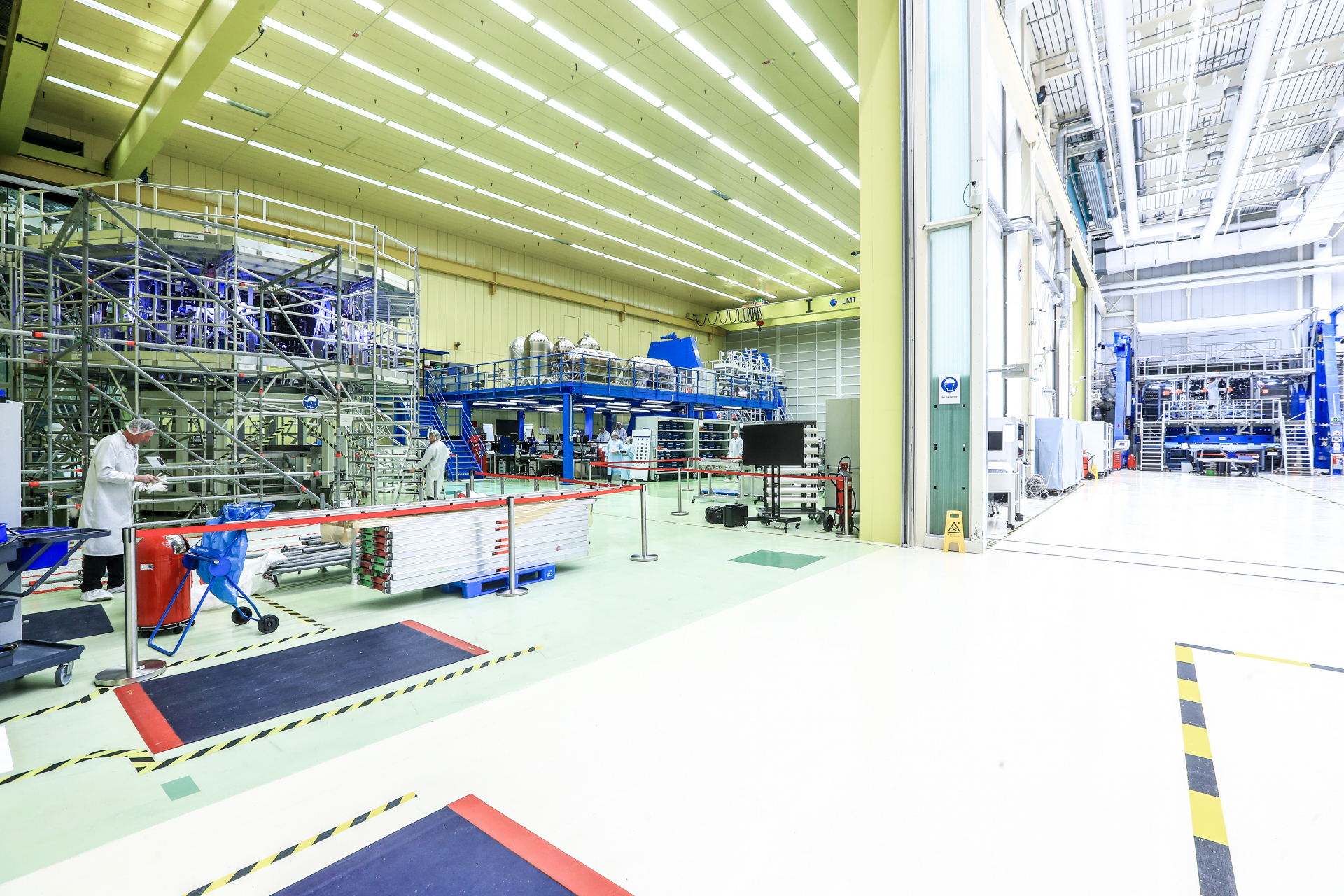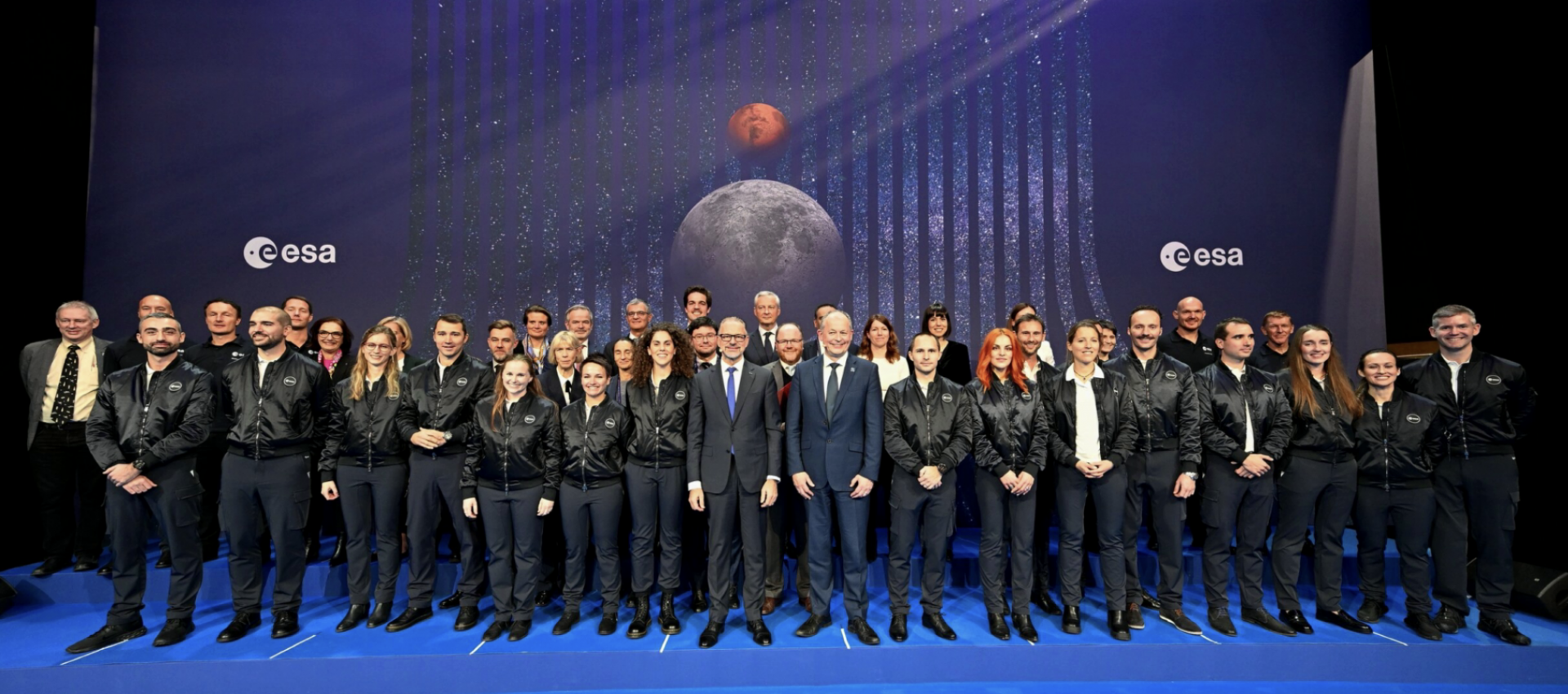22.02.2023

Airbus and ESA invited media for the Moon Media Day to show and talk about the three Orion European Service Modules currently being produced at Airbus Space and Defence in Bremen. During the event, NASASpaceflight spoke with two experts from NASA and ESA about the upcoming Artemis missions, the results of the first Artemis I mission, and more ESA projects.
NASASpaceflight first spoke with David Parker, the ESA Director for Human and Robotics Exploration. In a second interview, NASASpaceflight spoke to William Hartwell from NASA’s Orion Program Office, which will be covered in a subsequent story.
David Parker led the creation of ESA’s Terrae Novae program. The program includes regular astronaut missions to the International Space Station, Europe’s contributions to Artemis including the European Service Modules for Orion and two of the four main elements of the lunar Gateway, and a multi-decade exploration of the Red Planet through ExoMars and Mars Sample Return.
ESM-3, planned for the Artemis III mission, which will bring people back to the Moon, is currently outfitted with cables and equipment before the final tank installation, which will close up most of the available space. According to Parker, Airbus and ESA are expecting module delivery in the second half of 2023, which is currently on track.
Parker said about European contributions to the Artemis program and what it means for Europe to be part of Artemis: “It is very exciting for us at ESA to be part of the human return to the Moon. The first and most fundamental thing is to provide transportation. That is done by the European Service Modules.”
“No astronaut will move without a European Service Module. But also, one of the first places the astronauts go to is the Lunar Gateway. This is going to be our permanent space fort around the Moon, infrastructure that will help sustain missions to the Moon.”

ESA contributes to the Gateway by constructing the European System Providing Refueling, Infrastructure, and Telecommunication (ESPRIT). They will also work with JAXA to build the International Habitation Module (i-HAB). Thales Alenia Space will produce both modules in cooperation with international partners.
When asked how new European startup companies could help ESA to provide more projects for the Artemis missions, Parker replied: “It has been really important to us that we not only do the missions and the science but that we also develop a strong European industrial base. And the broader that base is, the better.”
“We all have seen the success of new ideas and new companies, and we are seeing that happen now in Europe, which is very cool, I think. There are several things on the journey, notably the development of rockets, development of capsules, and cargo space.”
“Maybe, and this is obviously a bit of a thought exercise, why doesn’t Europe have the capability to launch our own Astronauts?” Parker asked. “This is not something that will be answered tomorrow, but maybe these startups and smaller companies are able to contribute and answer that question!”
Regarding possible human contribution to the Artemis program, Parker said: “Right now, we have not assigned any astronauts to any missions. We have three seats agreed to by NASA for ESA astronauts to fly on Artemis missions.”
“It is unlikely that an ESA astronaut that did not go to the International Space Station (ISS) will go to the Moon, because the ISS will help develop the skills that are needed on the Moon and Mars.”

He also said regarding the training of potential Moon astronauts: “We already started to think about preparing our astronauts for Moon missions a long time ago. For example, lunar exploration will certainly involve understanding the Moon’s geology and geophysics.”
“We are training our Astronauts to become geologists and have the eye of a geologist. We send them out to remote locations, not only in Europe but also in the Arctic regions. To find regions that are a bit like the Moon and a bit like Mars and to train them that way.”
In addition, Parker said about the new ESA Astronaut class of 2022:” It was an interesting process to go down from the thousands that applied to our final selection of astronauts. We have selected five astronauts. They will start in July and are currently preparing to find their accommodation in Cologne and move to Germany.”
“In contrast: We have the astronaut reserve, who will stay in their current job, but we will be in touch with them. And then finally, we have our para-astronaut, John McFall; we are working with him on the para-astronaut feasibility project, where we want to demonstrate the ability to fly someone with physical disabilities.”
Parker also provided an update on ESA’s work on the Mars Sample Return mission. Mars Sample Return is a NASA-ESA proposal that would allow the return of Mars soil samples to Earth using a transport vehicle as early as 2033. ESA would contribute to this project with the Earth Return Orbiter (ERO), bringing the sample tubes back to Earth from Mars.

“The Earth Return Orbiter is the first spacecraft to be designed for entering Mars Orbit and actually leaving it again,” he said. “This is not making it twice as hard, but four times as hard.”
“You’ve got to take all the fuel with you to come back again. You have to spiral down from the Mars transfer to a low Martian orbit, get the sample container, and get out again. The orbiter will be seven tons in mass.”
Parker added: “We are currently in the preliminary design review and we hope to be in critical design review in about a year’s time. Hardware has started to come together. The project is going at full speed.”
“It is designed to launch on an Ariane 6 rocket. It will be the Ariane 64, the biggest version of the rocket. That is a critical part, to have Ariane 64 ready for NET (No Earlier Than) 2027.”
Another upcoming European mission is JUICE (Jupiter Icy Moons Explorer). The mission will study the three Jupiter moons Ganymede, Callisto, and Europa. It is planned to launch in April 2023 on one of the last Ariane 5 rockets.
“It has just been shipped to the launch site at Kourou for launch on Ariane 5. Of course, then there is a long way before it arrives at Jupiter,” Parker said. JUICE will arrive at Jupiter in July 2031.
Regarding the Rosalin Franklin lander, which is still searching for a new launch plan because of the Russian invasion of Ukraine, and the associated stop of cooperation on the project between Russia and ESA, Parker updated:” We have been talking since we had to decide to abandon the [Russian-provided] launch.”
“We were on track for a launch until that point. The rover and the lander are still located in the cleanroom at Thales Alenia Space. We have agreed as member states of the European Union to work on our own lander. It’s a very important mission, as it is the only mission that is only and directly designed to search for life on Mars.”
“We know we can develop a descent and landing system, but there are some critical instruments we need to develop, like the Radioisotope Generator (RIG), and we have been in talks to find solutions about that,” he added.

Render of the Rosalind Franklin rover on Mars. (Credit: ESA)
At the Moon Day media event, ESA also revealed the current status of ESM-4 and ESM-5, both in the clean room in Bremen but have yet to enter full integration. The final ESM of the first contract, ESM-6, will arrive later.
ESA and Airbus are in talks for ESM-7, 8, and 9, which will extend the contribution of ESM to the Artemis program until Artemis IX. Right now, ESA awaits Airbus to finalize its offer to continue the project beyond ESM-6.
(Lead image: ESM-3 in the clean room. Credit: Airbus Space and Defence)
Quelle: NS
